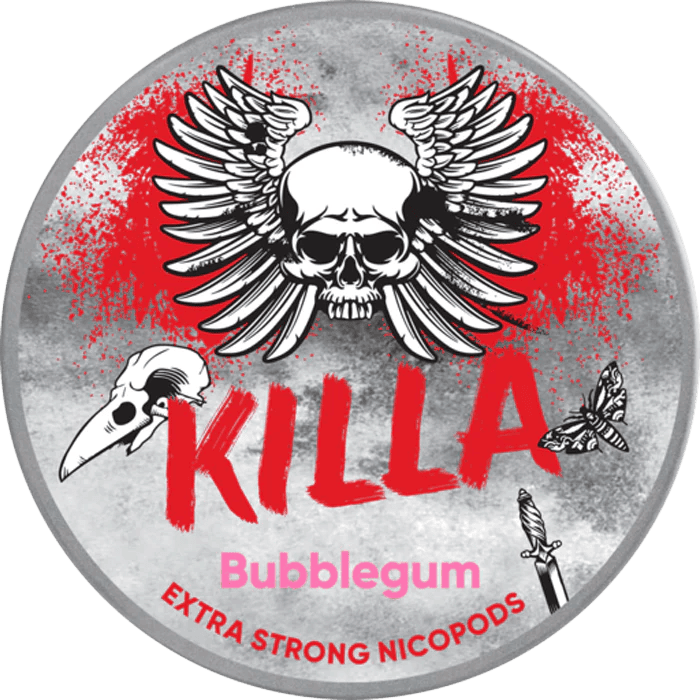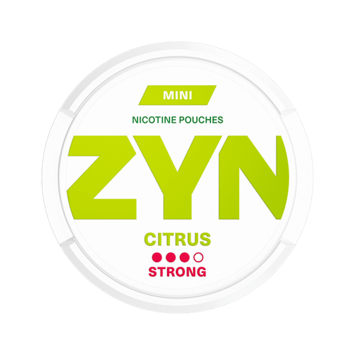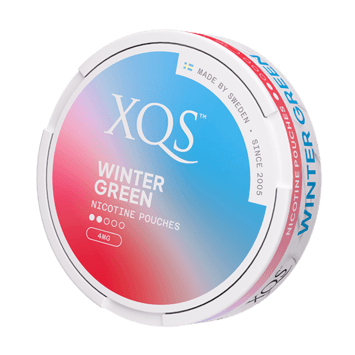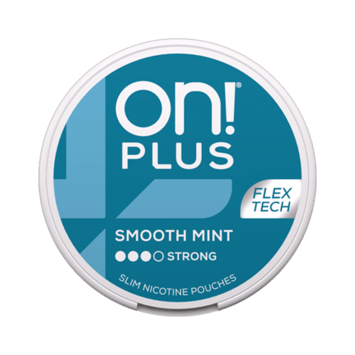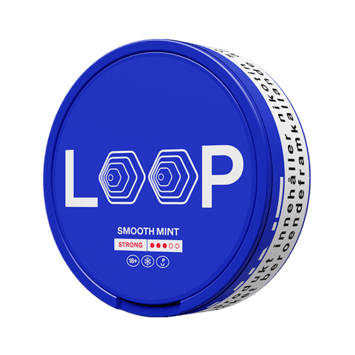Are nicotine pouches legal?
Philip Plainstein

If you’re wondering whether nicotine pouches are legal in the UK, this article aims to provide clarity. Nicotine pouches, often compared to traditional tobacco products like snus, have distinct legal standings. While snus, a tobacco-based product, is illegal to sell in the UK, adults aged 18 and over can use it legally. However, nicotine pouches, which are tobacco-free, fall under different regulations.
Understanding the law surrounding these products is essential. Nicotine pouches are currently legal for use by individuals over 18 in the UK. This is because they do not contain tobacco, aligning with EU directives that the UK has adapted. However, their legal status varies globally, with some countries banning them. For instance, you can find more information on where nicotine pouches are illegal by visiting this link.
The popularity of nicotine pouches has grown significantly, with usage increasing from 2.7% in 2020 to 5.4% in 2024. Despite their convenience and variety of flavors, concerns about their appeal to youth and long-term health effects have sparked debates. The UK government is considering new regulations, including age restrictions and packaging laws, to address these concerns.
In conclusion, while nicotine pouches are legal in the UK for now, their future remains uncertain as regulations evolve. This article explores the current state of their legality and the ongoing discussions shaping their future.
Introduction to Nicotine Pouches
Nicotine pouches are small, pouch-like products designed to deliver nicotine without tobacco. They are placed between the lip and gum, offering a discreet alternative to smoking or vaping.
What Exactly Are Nicotine Pouches?
Nicotine pouches are tobacco-free products containing nicotine, plant fibers, sweeteners, and flavors. They come in various flavors and strengths, making them appealing to consumers seeking to quit smoking or vaping.
An Overview of Product Features and Usage
These pouches resemble small tea bags. Users place them between their upper lip and gum, where the nicotine is absorbed through the mouth lining. They offer a convenient and flavorful experience, with options ranging from mint to fruity flavors.
As an alternative to smoking and vaping, nicotine pouches attract those looking for a less harmful option. Their popularity has grown, with usage increasing from 2.7% in 2020 to 5.4% in 2024. For more on where they’re illegal, visit this link.
The Legal Landscape in the UK
Understanding the legal status of nicotine pouches in the UK is crucial for consumers and retailers alike. The UK’s regulatory framework for these products is shaped by a combination of domestic laws and historical EU influences, which have evolved over time.
UK Regulations and Domestic Law
In the UK, nicotine pouches are regulated under the Tobacco and Related Products Regulations 2016 (TRPR). These regulations ensure that products meet specific safety and quality standards. For instance, the nicotine content in these pouches must not exceed 20mg/g, and child-resistant packaging is mandatory. Retailers must also register their products with the Medicines and Healthcare Products Regulatory Agency (MHRA), adhering to Good Manufacturing Practice (GMP) standards.
Historical Context and EU Influences
The UK’s approach to tobacco and vaping products has been significantly influenced by EU directives. For example, the 1992 EU Directive banned the sale of snus, a tobacco-based product, across Europe. However, since Brexit, the UK has retained many of these regulations while adapting others. The TRPR 2016, which aligns with EU directives, remains in force, ensuring continuity in product standards and safety.
Government Policies on Tobacco and Vaping
The UK government has implemented strict policies to regulate the sale and advertising of tobacco and vaping products. Advertising restrictions prevent marketing that could appeal to youth or non-smokers. Additionally, the Tobacco and Vapes Bill is set to introduce further regulations, focusing on public health and reducing harm. This bill aims to address concerns about youth access and the long-term health impacts of these products.
| Product Type | Regulation Status | Key Restrictions |
|---|---|---|
| Nicotine Pouches | Regulated under TRPR 2016 | Nicotine limit: 20mg/g, child-resistant packaging |
| Snus | Banned for sale (1992 EU Directive) | Illegal to sell, but legal for personal use if imported |
| E-Cigarettes | Regulated under TRPR 2016 | Tank size limits, e-liquid restrictions |
In summary, the legal landscape for nicotine pouches in the UK is defined by clear regulations and ongoing policy developments. As the government continues to focus on public health, the regulatory environment may evolve further, impacting both consumers and the industry.
Differences Between Nicotine Pouches and Traditional Tobacco Products
When exploring alternatives to smoking, it’s essential to understand how modern products differ from traditional options. Nicotine pouches stand out as a unique offering in the market, distinct from conventional tobacco-based products.
Comparing Nicotine Pouches and Snus
Nicotine pouches and snus share a common purpose—to deliver nicotine without combustion. However, their compositions set them apart. Snus is made from fermented tobacco, while nicotine pouches are tobacco-free, containing nicotine extracted from plants or synthetic sources. This difference significantly impacts their legal status and user experience.
Tobacco-Free Versus Tobacco-Based Options
The absence of tobacco in nicotine pouches makes them an attractive choice for those seeking to avoid traditional tobacco products. Unlike snus, which is subject to specific regulations due to its tobacco content, nicotine pouches fall under different legal frameworks, making them more accessible in regions where tobacco-based products are restricted.
The tobacco-free nature of nicotine pouches also influences their cultural perception. They are seen as a contemporary alternative, offering a discreet and flavorful experience without the association of traditional tobacco use. This shift aligns with evolving consumer preferences towards cleaner, modern solutions for nicotine intake.
In summary, the distinctions between nicotine pouches and traditional tobacco products like snus lie in their ingredients, legal standings, and cultural appeal. These differences not only shape their availability but also their reception in the market, making nicotine pouches a notable option for those looking for tobacco-free alternatives.
Are Nicotine Pouches Legal? Breaking Down the Facts
Understanding the legal status of these products in the UK can be confusing, but the facts are clear. Unlike traditional tobacco-based products, such as snus, which are banned for sale in the UK, these modern alternatives are legally available for purchase by adults over 18.
Selling and Personal Use in the UK
The sale of snus is prohibited under the Tobacco and Related Products Regulations 2016. However, personal use of snus is allowed if the product is imported. In contrast, these pouches are legally sold in the UK as they do not contain tobacco. Retailers must adhere to strict regulations, including child-resistant packaging and product registration with the MHRA.
Clarifying Common Misconceptions
One common misconception is that these products are illegal, similar to snus. However, the law clearly states that they are legal for sale and use by adults. Another myth is that they are risk-free. While they are considered a safer alternative to smoking, they can still pose risks, such as gum irritation and nicotine addiction.
For more information on the legal aspects and safe use of these products, visit our terms and conditions page.
Legislation Impacting Nicotine and Vaping Products
The UK government is taking significant steps to regulate tobacco and vaping products through the Tobacco and Vapes Bill, which aims to create a healthier environment by reducing smoking rates. This legislation is designed to address public health concerns and ensure that products like vapes and pouches meet strict safety standards.
Tobacco and Vapes Bill: Key Provisions
The Tobacco and Vapes Bill introduces several key measures to regulate the industry. One of the main provisions is the gradual phase-out of tobacco product sales, with a focus on reducing their availability over time. Additionally, the bill enhances enforcement mechanisms to ensure compliance with new regulations, particularly for vape products.
A licensing scheme will be introduced, requiring retailers to obtain licenses to sell tobacco, vapes, and pouches. This scheme will help authorities monitor sales and prevent underage access. The bill also strengthens regulatory power, giving authorities more tools to enforce these new rules effectively.
Under the new legislation, advertising for vapes will be prohibited on all channels, including billboards, bus stops, and sponsorships. Furthermore, vapes will no longer be sold through vending machines, reducing their accessibility to minors.
In summary, the Tobacco and Vapes Bill represents a significant shift in how the UK regulates tobacco and vaping products. By focusing on enforcement, licensing, and strict advertising controls, the government aims to create a safer and healthier environment for all citizens.
Health Concerns and Public Safety
Health concerns surrounding these products have sparked debates among experts and users alike. While they offer a tobacco-free alternative to smoking, potential risks, particularly related to nicotine addiction, remain a significant issue.
Potential Risks and Nicotine Addiction
One of the primary health risks associated with these products is their potential to cause nicotine addiction. Nicotine, a highly addictive substance, can lead to dependence, especially among younger users whose brains are still developing. Studies indicate that nicotine addiction progresses faster in adolescents compared to adults, highlighting the need for cautious use.
According to the World Health Organisation (WHO), nicotine is highly addictive, and its use should be approached with caution. The WHO has classified nicotine replacement therapy (NRT) as an essential medicine, but they also warn about the potential harms of newer nicotine products, including these pouches.
Research has shown that users may experience side effects such as mouth and throat soreness. For instance, a systematic review found that 5.4% of users reported mouth or throat soreness, while others experienced mouth ulcers. These side effects, although not life-threatening, can be uncomfortable and may deter some individuals from using these products.
Comparing the harms of smoking with those of these products, it’s clear that they pose fewer risks. However, they are not entirely risk-free. The slower nicotine delivery compared to cigarettes may reduce their abuse potential, but the long-term health effects are still under investigation.
Public safety is a top priority, and regulations aim to minimize risks. For example, the Tobacco and Related Products Regulations 2016 (TRPR) in the UK set a maximum nicotine content of 20mg/g for these products. However, the lack of specific regulations on nicotine strength and age restrictions leaves room for potential misuse, particularly among youth.
In conclusion, while these products offer a safer alternative to smoking, they are not without risks. Users should be aware of the potential for addiction and side effects. As the market evolves, ongoing research and stricter regulations will be crucial to ensuring public safety and minimizing harm.
The Role of Age and Youth Regulations
Age plays a crucial role in regulating access to nicotine products and vaping devices in the UK. The government has implemented strict measures to prevent underage sales and protect young people from the risks associated with these products.
Restrictions on Underage Sales
It is illegal to sell nicotine products and vaping devices to anyone under the age of 18. Retailers must verify the age of customers before making a sale, ensuring that only adults can purchase these items. This restriction is part of broader efforts to safeguard public health and prevent early addiction.
Measures to Prevent Youth Vaping
The UK government has introduced several initiatives to reduce vaping among young people. These include strict enforcement of age restrictions, public awareness campaigns, and educational programs. Additionally, the Tobacco and Vapes Bill aims to further regulate the industry and prevent youth access to these products.
- Strict age verification processes are in place to ensure that only adults can purchase nicotine products and vaping devices.
- Public awareness campaigns are being implemented to educate young people about the risks associated with vaping and nicotine use.
- The Tobacco and Vapes Bill includes provisions to strengthen enforcement and penalize those who sell these products to underage individuals.
These measures are designed to break the cycle of addiction and protect young people from the potential harms of vaping and nicotine use. By enforcing age restrictions and promoting education, the government aims to create a healthier environment for future generations.
Market Trends and Industry Perspectives
The market for nicotine pouches is experiencing rapid growth, driven by increasing consumer demand and strategic industry moves. In 2024, the UK market size was estimated at USD 247.6 million, with a projected compound annual growth rate (CAGR) of 7.6% from 2025 to 2030. This growth reflects a rising interest in alternative nicotine products, particularly among adults seeking discreet and flavorful options.
Impact of Flavoured Products and Social Media Promotion
Flavoured nicotine pouches dominate the market, accounting for 94.04% of revenue in 2024. Their appeal lies in a wide range of flavours, from mint to fruity options, which attract both new and experienced users. Social media platforms like TikTok and Instagram have played a significant role in promoting these products, especially among younger audiences. Influencers often highlight the convenience and discreetness of these pouches, further boosting their popularity.
Insights from Leading Tobacco Companies
Major companies like British American Tobacco (BAT) are investing heavily in this sector. BAT’s brand, Velo, has become a key player in the market, offering a variety of flavours and strengths. These companies are leveraging their expertise in tobacco products to innovate and capture a larger share of the growing market.
Trends in Consumer Use and Demographics
Recent data shows that the proportion of adults in Great Britain using nicotine pouches doubled from 2020 to 2024, reaching 5.4%. This growth is partly due to the products’ discreet nature and the availability of strong flavours. Over half of users (56%) reported starting nicotine pouches to quit smoking, while 23% used them to quit other tobacco products. The market is also seeing a shift towards online sales, with a projected CAGR of 11.0% for online channels from 2025 to 2030.
| Year | Market Value (USD million) | CAGR |
|---|---|---|
| 2024 | 247.6 | 7.6% |
| 2025 | 268.2 | 8.34% |
| 2030 | 386.2 | 39.0% |
For more insights into the market’s growth and projections, visit this link.
Future Regulatory Measures and Expert Consultations
As the UK government continues to address public health concerns, future regulations on vaping and related products are likely to undergo significant changes. These updates aim to refine current laws and ensure safer alternatives for consumers.
Potential for Legislative Updates
Expert consultations and public feedback are playing a crucial role in shaping future enforcement initiatives. The government’s recent consultation, which received over 400 responses, highlights the need for stricter regulations, particularly on child access and product safety. For more details on this consultation, visit the government’s website.
Enforcement and Licensing Developments
Authorities are expected to gain more regulatory power, enabling stricter enforcement of age restrictions and product standards. Licensing schemes will be introduced to monitor sales and prevent underage access. These measures aim to protect young people from the risks associated with vaping and similar products.
Planned updates include stricter marketing restrictions to reduce the appeal of these products to children. For instance, flavoured products may face tighter regulations to curb their attraction to youth. These changes are part of broader efforts to create a healthier environment and reduce smoking rates.
In conclusion, the future of vaping and related product regulations in the UK will be shaped by ongoing consultations and expert feedback. By focusing on enforcement, licensing, and youth protection, the government aims to ensure safer alternatives for consumers while addressing public health concerns.
Final Thoughts on Nicotine Pouches in the UK
In conclusion, nicotine pouches offer a legal and tobacco-free alternative to traditional smoking and vaping products in the UK. These products are distinct from snus, which remains illegal for sale, and provide adults with a discreet option for nicotine intake.
The market for these pouches is growing, with increasing popularity driven by their convenience and variety of flavours. However, it’s important to remain aware of the potential health risks, including nicotine addiction and side effects like mouth irritation.
Future regulations, such as those proposed in the Tobacco and Vapes Bill, may introduce stricter measures to ensure safer alternatives for consumers. These changes could impact both the industry and users, highlighting the need for ongoing awareness and adaptation.
As the UK continues to evolve its approach to nicotine products, staying informed about legislative developments and health considerations is crucial. By doing so, consumers can make informed choices about their nicotine use and support efforts to reduce smoking rates and promote public health.


